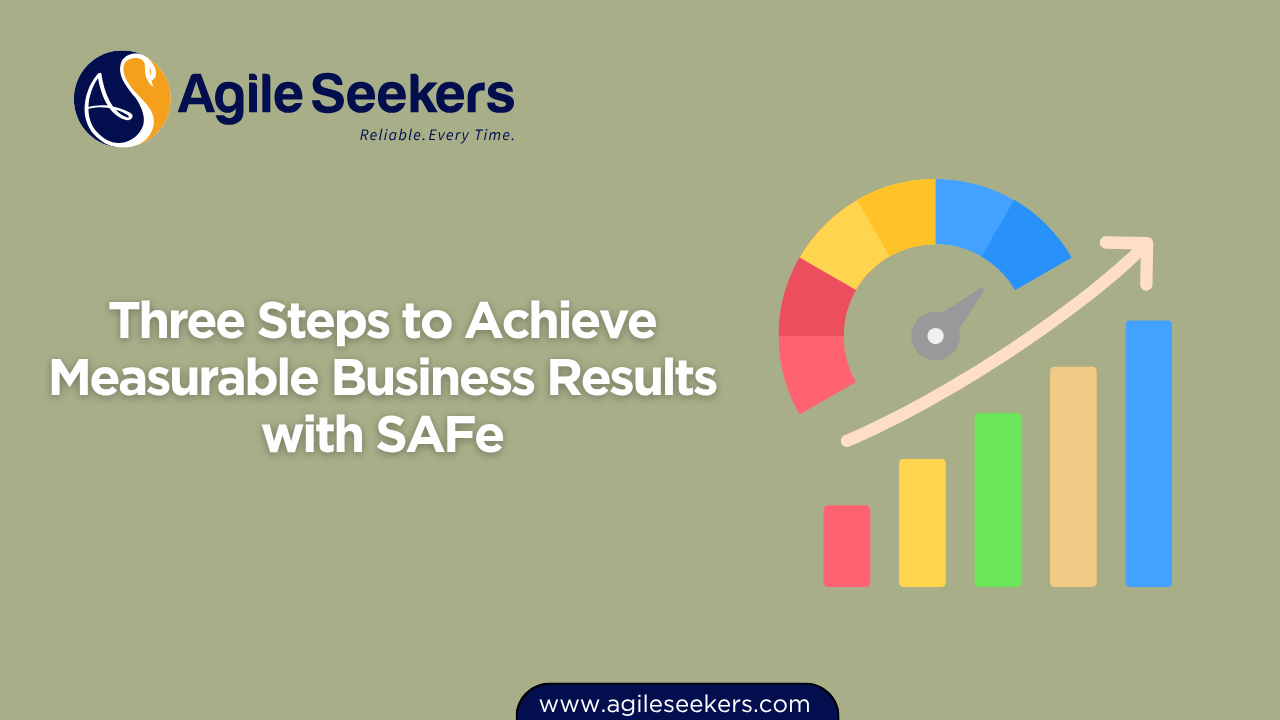Three Steps to Achieve Measurable Business Results with SAFe

Many organizations adopt the Scaled Agile Framework (SAFe) hoping it will instantly improve business performance. But measurable business outcomes don’t come from installing a framework alone—they emerge from intentional, sustained efforts across strategy, leadership, and execution. If you’re looking to get real results from SAFe, focus on these three foundational steps.
Step 1: Define and Align on Strategic Outcomes
Before launching Agile Release Trains or implementing backlogs, leadership must clarify what outcomes the organization seeks. Vague goals like “increase agility” or “speed up delivery” rarely drive transformation. Instead, measurable business objectives—such as improving time-to-market by 20% or increasing customer satisfaction scores by 15 points—offer clear direction.
To align teams on these targets, strategic themes must cascade through portfolios, value streams, and teams. This alignment begins during the SAFe portfolio strategy process, which helps prioritize investments and connect epics to value.
Product Managers and Product Owners play a critical role in bridging strategy and execution. Through SAFe Product Owner/Product Manager (POPM) Certification, professionals learn how to translate strategic objectives into features that deliver business value iteratively.
✅ External Link: The SAFe Business Agility Value Stream (BAVS) outlines how enterprises can generate rapid and measurable results from customer-centric actions.
Step 2: Enable Lean Flow and Quality Execution
Having the right strategy is only useful if execution delivers on it. SAFe promotes lean flow through tools like Program Increment (PI) Planning, team cadence, and relentless improvement. But to make this work, team-level agility needs to be strong.
The Scrum Master plays a vital part here. Beyond managing ceremonies, they ensure teams remove impediments, adopt DevOps practices, and maintain sustainable pace. Investing in SAFe Scrum Master Certification equips leaders with the tools to guide Agile teams effectively.
For complex environments, the SAFe Advanced Scrum Master Certification helps deepen facilitation skills, support cross-team coordination, and drive system thinking.
Execution also requires rigorous dependency management, timely feedback loops, and built-in quality. Metrics like lead time, throughput, and escaped defect rates help leaders spot delivery friction. SAFe encourages using a Flow Framework to track these metrics at team and ART levels.
✅ External Link: Learn how flow time and flow load metrics expose bottlenecks and drive actionable improvements in SAFe.
Step 3: Empower the Train to Own Outcomes
The final step in achieving measurable results is to make business value a shared responsibility across the Agile Release Train (ART). This means shifting the mindset from “completing stories” to “delivering outcomes.”
The Release Train Engineer (RTE) plays a central role in reinforcing this mindset. As the servant leader for the ART, the RTE fosters alignment, removes systemic blockers, and helps teams connect their work to business results. A well-trained RTE can turn PI Planning into a true business commitment session, not just a task breakdown.
Through SAFe Release Train Engineer Certification, leaders learn how to support decentralized decision-making while maintaining alignment to enterprise goals.
At the end of each PI, the Inspect and Adapt (I&A) workshop gives teams a structured way to evaluate whether they met the intended outcomes—not just whether work was completed. This feedback loop creates a culture of ownership and learning.
✅ External Link: Explore how Inspect and Adapt Workshops promote transparency and drive enterprise agility.
Conclusion: Measurable Results Are Built, Not Hoped For
The SAFe framework gives you the tools, but results require intent. By anchoring your transformation on strategic clarity, enabling lean execution, and distributing ownership across the ART, your organization can move from frameworks to outcomes.
SAFe isn’t a silver bullet—it’s a system that works when people use it with focus and discipline.
For those looking to take ownership of this journey:
-
Start with SAFe Product Owner/Product Manager Certification to drive value prioritization.
-
Build execution muscle with SAFe Scrum Master and Advanced Scrum Master Training.
-
Lead transformation as a Release Train Engineer.
These aren’t checkboxes—they’re capabilities. And building them is how business results become measurable.
Also read - Why Achieving Business Results with SAFe Requires More Than Just Framework Adoption
Also see - How Enterprises Can Use SAFe to Respond Faster to Market Changes




















